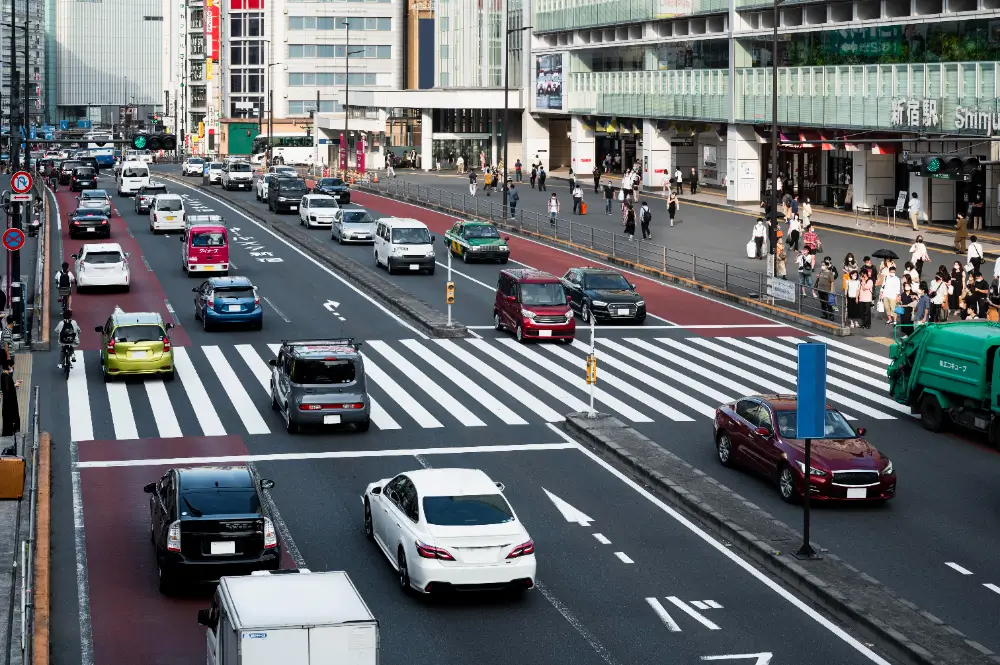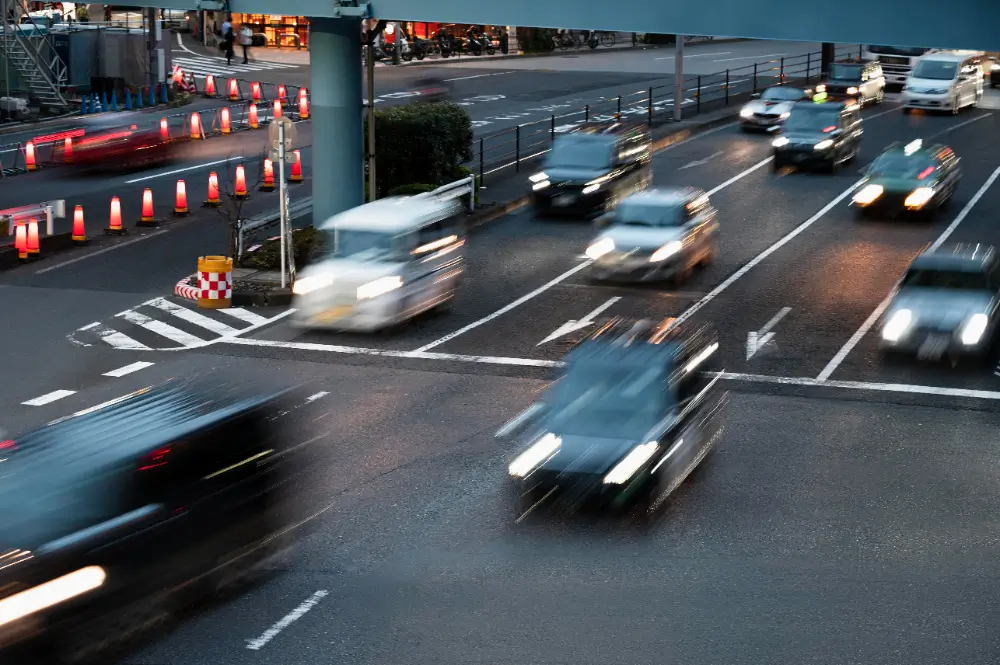Vision Zero is an international movement whose objective is to reduce the number of traffic related deaths and serious injuries to as close to zero as is possible. It aims at increasing safety of streets, enhancing police performance in law enforcement and promoting efficiency of safety in urban space.
Fundamentally, vision zero is much more than a measure to reduce cases of accidents but an attempt to redesign the cities and road network to eliminate risks to people’s lives with special emphasis on those using roads on and around them including pedestrians, cyclists, and children.
The goal is clear – Zero traffic deaths!
Today vision zero policies affecting road design, law enforcement, and people’s behavior are in place in big cities across the globe. With improved formulation of urban planning measures that also have robust enforcement capabilities, cities are on the right track towards attaining this great, and potentially life-saving ideal.
Urban planning is therefore the foundation of Vision Zero. So, effective organization of city life and construction of roads and other facilities can make a major contribution towards the prevention of mishaps.
Safer streets means weaving components like pedestrian precincts, bike ways, and traffic calming measures into the fabric in a way that reduces the risk of death and injury. Urban planners must also apply principles including mixed use, mobility hubs which discourage high speed driving and make different modes of travel more attractive.
The overall improvement of safe crossing facilities, adequate illumination and well placed signages will also help in decreasing the chances of accidents.
Designing safer street to be accomplished through planning
Safer streets are not just wider roads but they also encompass the journey undertaken by pedestrians and cyclists. Such plans as road dieting where the road is narrowed or green space between the cars and the sidewalk mean safer roads for everybody.
Devising of roundabouts and regrouping of intersections is amongst the solutions that urban planners are put in place to endeavour for a lesser conflict and a smaller crash intensity. Further, traffic sensors and real-time traffic information can prevent occurrence of accidents by redirecting traffic away from the traffic prone areas.
The Significant Synthesis of the Enforcement and Road Safety
Although establishing the necessary urban conditions is a responsibility of urban planning and architecture, it is equally important for traffic safety to have an effective traffic control system in order to achieve the goals of Vision Zero.
This involves observing the manner in which traffic flows, Ticketing; which is the act of penalizing traffic behavior through fines, and use of force multipliers such as speed cameras, red light cameras which are used in combating such traffic behaviors as speeding, running of red light and traffic under influence.
The permanent and conspicuous patrols not only deter potential law violators but also remind the public of the need to abide by road regulations. Despite the best engineering designs, the urban roads can still be hazardous due to poor enforcement.
Analyses That Support Improved Urban Layout
Experience has shown that the two approaches of data analysis in urban planning and enforcement are essential for altering road safety. Modern cities are equipped with huge amounts of traffic data that can point at accident-prone parts of the road and dangerous sections. In this way, planners can look at crash data and use predictive analytics to reconstruct lethal intersections and enforce traffic violators in regions with the highest incidence rates. In addition, dynamic monitoring of data and traffic modeling may predict future traffic trends and tendencies in order to change enforcement and planning strategies. This means that smart city technologies such as machine learning can come in handy in helping urban planners and the law enforcement agencies to design safer and efficient transport systems.

A Public Health-Related Synthesis
Vision Zero also has other advantages which are not closely connected with road safety. It is a World Health Organisation led government health promotion initiative that seeks to address all aspects of people’s lives and make them healthier.
For any city that succeeds in the reduction of traffic fatalities then it is not only the lives of people but the quality of the people that are being enhanced. Injury frequency that is associated with traffic implies that fewer individuals are likely to seek hospitalizations and place a burden on the healthcare facilities.
In addition, it similarly improves the safety of roads, pedestrian, bicycle, or public transport users, thus promoting better health. Vision Zero concept is closely connected with other goals on public health, such as decreasing level of emissions of air pollutants, increasing amounts of physical activity, and facilitating social interactions of people through designing communities that can be safely accessed on foot.
In what ways does Vision Zero lower the amount of traffic fatalities and injuries?
Perhaps the strongest argument the proponents of Vision Zero put forward is the potential for an extremely low fatality and severe injury rate. Consequently, the Vision Zero policies are meant to save lives rather than make traffic flow because they are meant to create streets that are safe by default.
This involves reducing the general speed limit, placing a physical gap between vehicles and roads users and designing more safe routes for vulnerable road users. Vision Zero seeks to understand that error is inherent in the behavior of people and that urban design should be structured to reduce the consequences of failure.
Successful Strategies for Including Communities in the Vision Zero Process
It is important for Vision Zero to engage the community in their plans and strategies due to different reasons. The involvement of the public in urban planning activities means that needs of all the users of the roads are taken into consideration.
This way cities can ensure that some of the decisions being taken will favor development of people-centered policies and such like. Other initiatives include public awareness campaigns and other public enlightenment programs which may be used to increase public awareness of the need for increased and better adherence to road safety.
People who perceive these streets as their own will embrace enforcement and support urban planning in the streets as opposed to outsiders.
Technological Solutions that can Help Vision Zero Performance
Technology is particularly important in the pursuit of the Vision Zero goals. Intelligent traffic control systems, the intelligent transportation infrastructure, vehicle-to-infrastructure technology also contribute to the realization of safer roads.
For instance, smart traffic lights can detect and derive traffic pattern in real time and, therefore, prevent traffic congestion and related mishaps. Self-driving cars also have inherent capability to prevent road accidents due to human factors. Moreover, data analysis and artificial intelligence solutions are beneficial for identifying and forecasting traffic flows, which will provide a beneficial effect on the enforcement efforts of the agencies.
The Role of Political Will in Advancing Vision Zero
The Vision Zero working model need to have good political backing and leadership. Road safety must become a top priority for local governments and, more financial resources have to be devoted to road enhancements and the adoption of legal measures for vulnerable road users.
Political leaders must also enter into a meaningful discussion with residents, business people, the planning authority and the police, among others. Different cities have embraced Vision Zero as part of their decades-long strategy, and without elected officials’ support, it can be hard to make any significant headway. A particular focus should be made of political influence to overcome the political barriers to ensure that no one dies in car accidents.
Vision Zero’s Global Impact:
Cities in the world over are already benefiting from Vision Zero measures that are being put in place. Stockholm for instance, New York, and Oslo has comparatively registered low traffic deaths due to good planning, policing, and innovation.
For instance, the road safety strategy of Stockholm has significantly cut down the rate of fatalities in traffic accidents due to lowered speed limits , enhanced physical characteristics of roads and strengthen enforcement procedures. The above cities are a good example that show that when an integrated approach that includes planning, enforcement as well as mobilization of the community is employed, results can be achieved.
Lets Wrap Up!
Thus, Vision Zero is the brave, life-saving concept, which is aimed at changing the existing tendencies in the urbanization process. Besides having appropriate planning and designing strategies and operations, advanced technologies, and strict enforcement, cities can make the streets safer. Vision Zero is not limited to saving lives of the individuals only but it also ensure better health of the population.
But, to reach its goal of no more people dying in road accidents, it still entails the participation of government, city designers, police, and the public. This post shows that with proper collaboration, cities can strive to make the vision of zero fatalities in traffic accidents a reality or rather a reality of Vision Zero.
Luckily, there are three pillars that should guide cities worldwide interested in embracing Vision Zero in its entirety: safe streets, enforcement, and community engagement.

